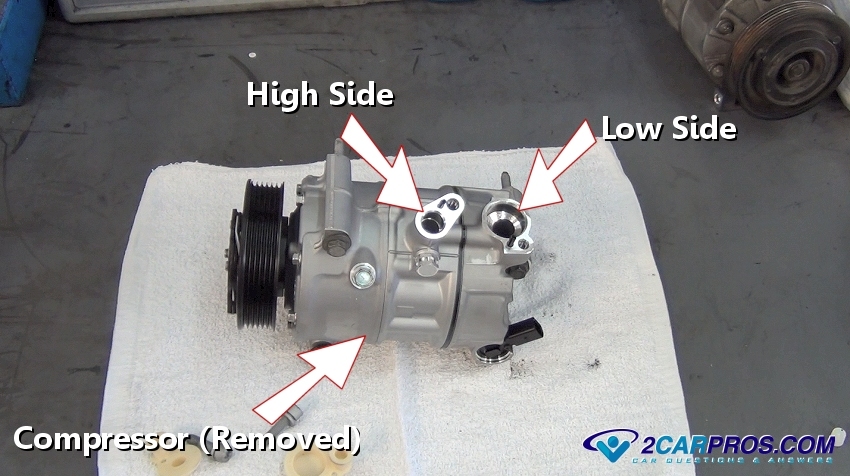
Step 10: Lower the new compressor into the vehicle. Some compressors will come with replacement o-rings, or your can get replacements from your local auto parts store. Use a small screwdriver or pick to remove the o-rings from the A/C pressure lines. Step 9: Replace the pressure line o-rings. Most compressors use PAG oil, but a few use Polyol Glycol, so it’s important to determine which is used in your vehicle.Īlso, some compressors come with the oil already installed read the instructions supplied with your compressor. Then remove the dust caps from the new compressor and add a small amount of recommended lubricant to the new compressor (usually around ½ ounce). Compare the new compressor to the old one to ensure they are the same. It should come out with a little tugging, but be careful because it is often heavy. Step 7: Remove the compressor from the vehicle. Using a ratchet or wrench, remove the compressor mounting bolts. Step 6: Remove the compressor mounting bolts. Plug them to prevent system contamination. Using a ratchet or wrench, disconnect the pressure hoses from the compressor. Step 5: Disconnect the pressure hoses from the compressor. Step 4: Disconnect the electrical connectors from the compressor. While holding the tensioner away from the belt, slide the belt off the pulleys. Step 3: Remove the belt from the pulleys.

Note: Be sure to wear protective gloves and safety glasses before working.
#Car air conditioner compressor repair professional#
This can only be done by a professional using an evacuation machine. Before the A/C system can be serviced, the refrigerant must be removed from the system. Step 2: Have the refrigerant recovered by a professional. The A/C compressor will be located at the front of the engine with the rest of the belt-driven accessories. A compressor that is seized may also contaminate the rest of the A/C system with metal debris. If the compressor has failed, the A/C system will not work. When the A/C button is pushed the clutch is engaged, locking the compressor to the pulley, causing it to turn. The pulley is driven off a drive belt whenever the engine is running. All modern compressors utilize a clutch and drive pulley.

The compressor is designed to pump refrigerant through the A/C system and to convert low pressure vapor refrigerant into high pressure vapor refrigerant.


 0 kommentar(er)
0 kommentar(er)
